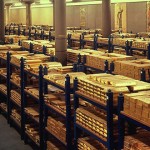 US natural gas swung between gains and losses on Wednesday ahead of EIAs weekly US storage report as weather forecasts pointed to freezing cold temperatures, well below average.
US natural gas swung between gains and losses on Wednesday ahead of EIAs weekly US storage report as weather forecasts pointed to freezing cold temperatures, well below average.
On the New York Mercantile Exchange, natural gas for delivery in January plunged to $3.844 per million British thermal units by 13:30 GMT, down 0.53% on a daily basis. Prices held in range between day’s low of $3.835 and session high at 3.875 per mBtu. The energy source was up 1.56% on weekly basis on Wednesday.
Prices were pressured by expectations for a smaller decrease in inventories compared to the previous week but losses were limited on forecasts for below-average temperatures.
According to NatGasWeather.com, a strong storm is expected to race today across the eastern US, with blustery winds and areas of moderate to heavy rain, snow and ice. Cold temperatures will take hold in the east during the weekend. Early next week, a quieter period over the northern US is expected, before a bitter cold Arctic blast encompasses the southwestern regions of Canada around December 2nd. This blast will be formed into the Pacific Northwest and Great Basin, before it hits the plains and the south. Low temperatures will lead to higher than average demand for natural gas and heating.
NatGasWeather.coms forecast for the week ending December 10th called for a significant Arctic outbreak to sweep across much of the US. The storm will be formed around the Pacific Northwest and northern Rockies, after which it is likely to reach as far as the plains and deep into the south. There is probability for this cold blast to lower temperatures across much of the northern and central US as much as 25-30 degrees below normal average.
According to AccuWeather.com, the low in New York on December 7th will be 27 degrees Fahrenheit, beneath the average of 35 degrees, while readings in Houston will be 37 degrees Fahrenheit, 11 degrees below usual. The low in Chicago on December 7th will be 15 degrees Fahrenheit, 10 degrees below normal.
When cold weather is expected, natural gas surges as increased electricity demand to power air-conditioning calls for more supply of the fuel, which is used for a quarter of U.S. electricity generation. Above-average readings in the winter season have the opposite effect. Consumption usually picks up from November through March. According to the Energy Information Administration, power generation accounts for 32% of U.S. gas demand and 49% of U.S. households use the energy source for heating.
Last Thursday, the Energy Information Administration reported a larger-than-projected withdrawal in U.S. Inventories in the week ended November 15, signaling robust demand as we enter the winter heating season. Stockpiles fell by 45 billion cubic feet compared to projections for a 38 billion withdrawal according to the median estimate of 21 analysts surveyed by Bloomberg. Last week’s decrease was above the five-year average decline of 2 billion cubic feet and a 36 billion withdrawal during the comparable period a year earlier.
Total gas held in U.S. underground storage hubs equaled 3.789 trillion cubic feet and were 2.3% above last year’s amount of 3.878 trillion. The surplus over the five-year average inventories narrowed to 0.4% from 1.5% a week earlier.
Market players are awaiting the release of EIAs weekly U.S. inventories report for the week ended November 22nd, due today at 17:00 GMT. According to analysts expectations, natural gas inventories have probably shrunk by between 5 billion and 20 billion cubic feet, compared to the five-year average withdrawal of 15 billion and last years 2 billion decline during the comparable week.





